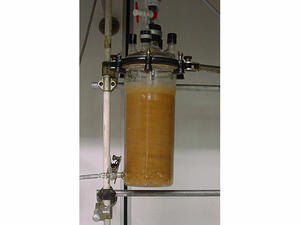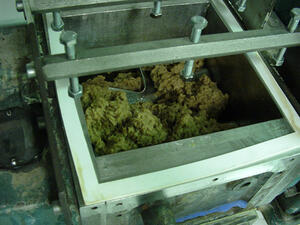
Services
Testing Laboratory
Ozone treatments
Oxidation of fibres, delignification, brightening of waters
- To delignify lignocellulosic fibres by oxidation of lignin
- To oxidise cellulose of different fibre grades to create carbonyl and carboxyl groups
- To improve the paper pulp mechanical properties
- To oxidise solids in suspension in process effluents or in wastewater treatment plant waters
General informations
Since the 1980s, CTP has worked on the use of ozone in the pulp industry, generating numerous publications and some patents. CTP proposes an expertise in the ozone reactions on the lignocellulosic fibres.
The laboratory is equipped with 3 different systems for ozone treatments of different substrates at:
- High consistency (>30%)
- Medium consistency (5 to 12%)
- Low consistency (< 3%), at different pHs
The treated substrates can be unbleached or bleached chemical pulps, high-yield mechanical pulps after primary and secondary refining and process effluents and WWT waters.
Technical data
“Ozonia” ozone generator
- Feeding: oxygen (supplied from a bottle)
- Pressure: 1 bar
- Flow: 2 m3/h
- Ozone concentration: 100 g/cm3 maxi in the oxygen as a vector
- Ozone flow: 1 l/min maxi
High consistency system
- Reactor volume: 4 and 12 litres
- Pulp consistency: > 30%
- Fibres to treat: 50 to 150 g (as o.d.)
Medium consistency system
- Reactor volume: 4 litres
- Pulp consistency: 5 to 12 %
- Fibres to treat: 100 to 200 g (as o.d.)
Low consistency system
- Reactor volume: 2 and 4 litres
- Pulp consistency:
- up to 1.5% for softwoods
- up to 4% for hardwoods - Fibres to treat: 10 to 120 g (as o.d.)
- Possibility to treat effluents
 |
 |
Also to be seen
Consultancy Diagnosis
Centre of Excellence
Testing Laboratory
Platforms
CTP'S Projects